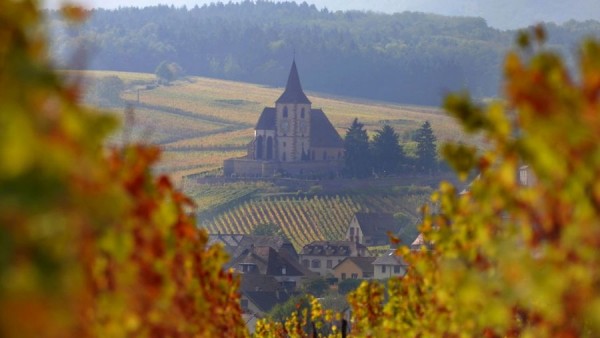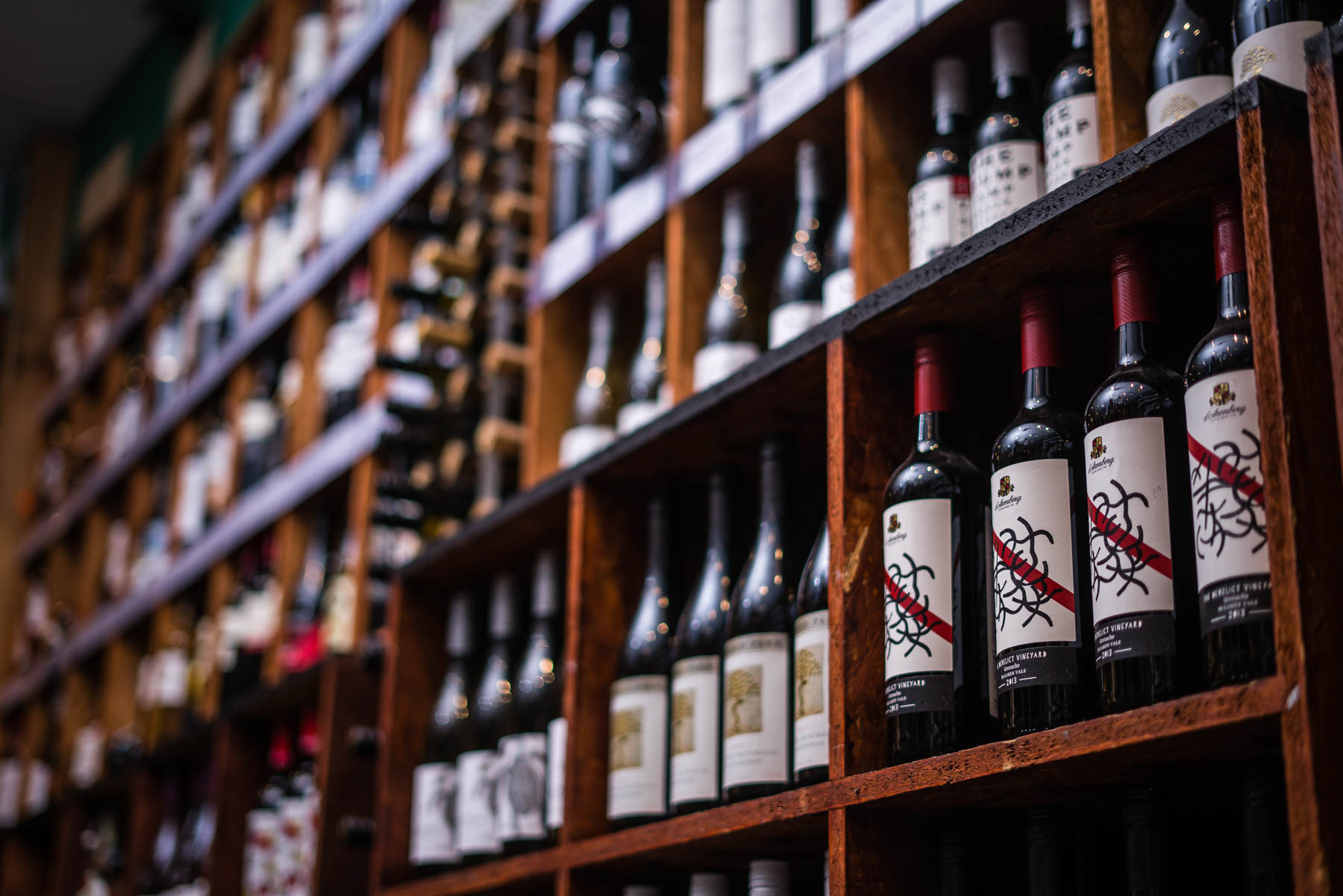Five reasons to adore Alsace
Laura on 7 May 2015
Alsace is a picturesque region of France which has its own unique personality. Separated from Germany by the Rhine, and from France by the Vosges mountains, Alsace takes in cultural influences from both countries. The same mountain range provides shelter from the wind and rain, making this one of driest regions in France. And it’s this isolation which means there’s much to be discovered in this land of vinous delights...

 Unique and modern - although they’ve been making wine since 1626, Trimbach – one of the region’s greatest producers – has a style that is decidedly modern: bone dry wines (see exceptions below...) which are aromatic, fruity and complex. These are great aperitif wines on their own, but they truly come alive with food.
Unique and modern - although they’ve been making wine since 1626, Trimbach – one of the region’s greatest producers – has a style that is decidedly modern: bone dry wines (see exceptions below...) which are aromatic, fruity and complex. These are great aperitif wines on their own, but they truly come alive with food.
Not only are they a brilliant foil for the rich textures of the local cuisine of goose, foie gras and buttery sauerkraut, one of the world’s greatest surprises is just how amazing these wines are with modern, international cuisine and its influences from Asia.
From the Turkish Delight fragrance of Gewurztraminer to the floral and lime burst of a great Riesling, these are wines crying out for a food matching contest. Next week we’ll show you how to make a Malay-Chinese curry with a Trimbach Riesling – mind-blowingly good!
 Great Value – great value doesn’t necessarily mean ‘cheap’, but these are literally ‘hidden gems’ that the world hasn’t cottoned on to yet. It helps that the wines are packaged in rather unfashionable long bottles and look ‘a bit German’. For those not in the know, this is an instant turn off, which leaves all those incredible bottles of wine for those who appreciate the beauty inside. For around a tenner you can get one of the world’s classiest wines – just don’t tell anyone, or they’ll be none left.
Great Value – great value doesn’t necessarily mean ‘cheap’, but these are literally ‘hidden gems’ that the world hasn’t cottoned on to yet. It helps that the wines are packaged in rather unfashionable long bottles and look ‘a bit German’. For those not in the know, this is an instant turn off, which leaves all those incredible bottles of wine for those who appreciate the beauty inside. For around a tenner you can get one of the world’s classiest wines – just don’t tell anyone, or they’ll be none left.
 Simple quality steps - The structure of Trimbach’s range is very simple: their Classic (yellow label) range is a benchmark for the region rather than an ‘entry level’, a glimpse of the high standards to come. For a few quid more, you get a Reserve wine (yellow label plus 'Reserve'), made using grapes from older vines with increased intensity of fruit flavour.
Simple quality steps - The structure of Trimbach’s range is very simple: their Classic (yellow label) range is a benchmark for the region rather than an ‘entry level’, a glimpse of the high standards to come. For a few quid more, you get a Reserve wine (yellow label plus 'Reserve'), made using grapes from older vines with increased intensity of fruit flavour.
Another step up is the Reserve Personnelle selection, known as the ‘gold labels’ – the grapes are picked from the estate’s best sites and are only made in the very best years. Again prices are fair – the mid £20 mark seems justified for the rarity alone, let alone the flavour. At the top of the tree are their Prestige and collection wines – these represent the priciest of Trimbach’s production and include sweeter styles which are revered as some of the best in the world. Expensive? Don’t ask...
 Simple Labelling - Alsace seems to have bypassed those impenetrable labels of neighbouring Germany and the often confusingly labelled wines from the rest of France - like those of Burgundy for instance. There’s no need to learn a heap of new rules and regulations, as wines are labelled with the grape variety, style and where it’s from. Simple eh? Well not completely...
Simple Labelling - Alsace seems to have bypassed those impenetrable labels of neighbouring Germany and the often confusingly labelled wines from the rest of France - like those of Burgundy for instance. There’s no need to learn a heap of new rules and regulations, as wines are labelled with the grape variety, style and where it’s from. Simple eh? Well not completely...
Forget the word ‘Grand Cru’ on an Alsace label – although it means something specific, and was created with the best intensions, critics argue that there are too many nominated vineyards of mediocre quality and many are just too big to guarantee any kind of consistency.
As with any region, it’s best to get to know a great producer, and luckily here at GWW we have Trimbach to rely on. Trimbach rejected the principles of Grand Cru labelling long ago, even if they happen to have vines in the region’s top Grand Cru vineyards. One of Trimbach’s most sought after wines is the famous Clos Ste-Hune Riesling which comes from the Grand Cru site of Rosacker, yet there is no mention of its Grand Cru pedigree on the label. Their quest for quality at all levels, from Classic to Prestige, means that the name of Trimbach alone is a guarantee of quality.
 A range of styles - As we've mentioned, the wines are modern, crisp and aromatic – and great with food. But the sweet wines of Alsace are legendary, and it’s here that the labels make complete sense.
A range of styles - As we've mentioned, the wines are modern, crisp and aromatic – and great with food. But the sweet wines of Alsace are legendary, and it’s here that the labels make complete sense.
The word ‘vendange tardive’ on the label indicates that the wine is ‘late-harvested’ so lots of sugar has accumulated in the berries. Sélection de Grains Nobles is a name used for wine from grapes that have reached even higher sugar levels, usually with a proportion of grapes affected by botrytis - that benevolent rot responsible for the flavour of the world famous sweet wines of Sauternes.
But it’s not just a white wine producing area - there is also a tiny amount of red produced, and despite the rarity, the prices are, as usual, very reasonable. The locals serve these chilled in the summer - sounds like a great idea.
So, give this undiscovered corner of France a go – you’ll recognise the grape varieties but will be astonished by the depth of flavour in these incredible wines.
By Chris Penwarden

